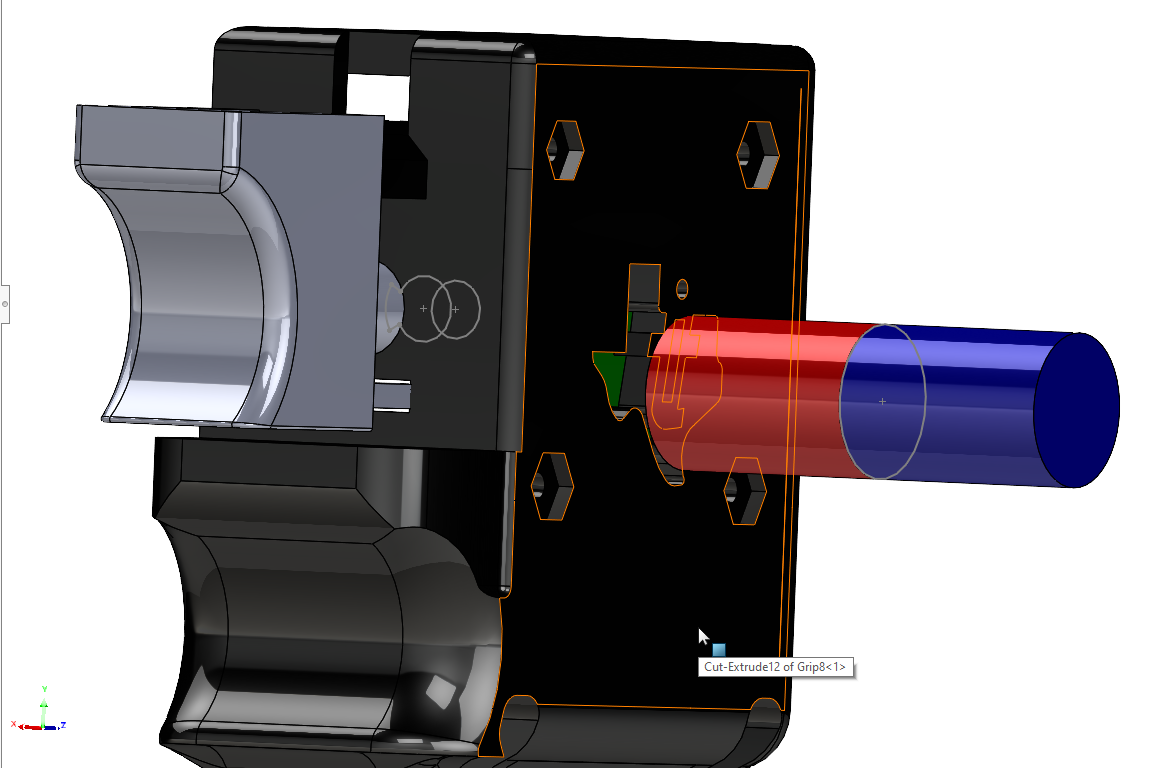TIDUBY9 December 2021
- Description
- Resources
- Features
- Applications
- 5
- 1System Description
-
2System Overview
- 2.1 Block Diagram
- 2.2 Highlighted Products
- 2.3
Design Considerations
- 2.3.1
Design Hardware Implementation
- 2.3.1.1 Hall-Effect Switches
- 2.3.1.2 Linear Hall-Effect Sensor Output
- 2.3.1.3 Power Supply
- 2.3.1.4 Transistor Circuit for Creating High-Voltage Enable Signal
- 2.3.2 Alternative Implementations
- 2.3.1
Design Hardware Implementation
- 3Hardware, Software, Testing Requirements, and Test Results
- 4Design and Documentation Support
2.3.1.1.2 U2 Stray-Field Sensor Configuration
Switch U2 is the stray field sensor. U2 is an optional sensor that can be disabled by depopulating resistor R21 on the board and placing a 0-Ω resistor between pads 1 and 2 of the R16 3-pad footprint. The GND pin of U2 is connected to the OUT2 output of U1, and is therefore, only powered if the output of U1 is asserted low. Note that because U2 is not powered on when Switch 1 is inactive, its actual voltage varies, but remains near the inactive state (logic high) of the load switch.
In addition, U2 uses the OUT1 pin of the unipolar DRV5032DU X2SON package, so it only responds to a negative magnetic flux density reading. OUT1 is assured to be asserted low when the sensed magnetic flux density is less than –3.9 mT and asserted high when the sensed magnetic flux density is greater than –0.9 mT. With U2 being powered from U1, the U2 output is only assured to be asserted low if the sensed magnetic flux density at U1 is greater than BOP of OUT2 while the sensed magnetic flux density at U2 is less than BOP of OUT1. Consequently, the output of U1 is not needed to determine whether the system should be in sleep mode if the U2 stray field sensor is enabled. In this case, the output of U2 provides enough information on the state of U1 and U2.
Since the wake-up sensor only responds to a positive field and the stray field sensor responds only to a negative field, the design is robust against external magnets placed in the orientation shown in Figure 2-11 and unidirectional stray fields exposed to the design. In this orientation, both the wake-up sensor and stray field sensor either detect a strong negative field or a strong positive field. If a strong negative field is applied to both sensors, switch U2 is not powered and the system is placed in sleep mode. If a strong positive field is applied to both sensors, switch U2 is powered, but the system is still placed sleep mode.
 Figure 2-11 External Magnet Orientation Best Detected by Stray Field Sensor
Figure 2-11 External Magnet Orientation Best Detected by Stray Field Sensor